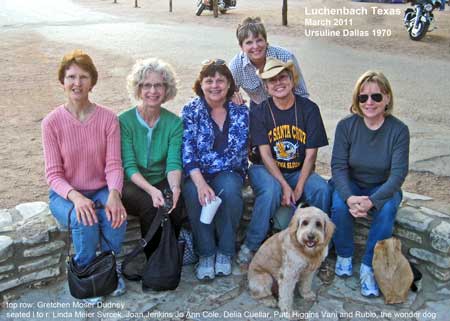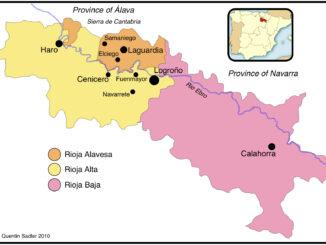What Women Want (in Texas Wine)
Remember the storyline from the Mel Gibson movie of the same name:
“Nick, a somewhat chauvinistic advertising exec hot shot, has his life turned haywire when a fluke accident enables him to hear what women think.”
See: http://www.youtube.com/watch?v=iUTtO1KNdAY
Well, forget that story line for the moment. What I’m talking about here relates to what women want in terms of Texas wines. While I didn’t have a fluke accident like Mel Gibson’s character in the movie, a recent reunion of my wife’s high school girlfriends at our Texas hill country cottage gave me an opportunity to do a decidedly non-scientific survey on this subject when my wife asked me to procure a case of wine for her extended weekend retreat.
I felt that my Texas wine selection did a good job covering the map, both literally and figuratively, as pertaining to both varietal selection and geographic distribution of the wines. The wines included:
White wines: Duchman Family Vineyards Vermentino, Becker Vineyards Viognier, Haak Vineyards Blanc Du Bois (semi-sweet)
Red wines: Duchman Family Vineyards Dolcetto, Becker Vineyards Prairie Rote (Rhone Blend), Haak Vineyards Tempranillo
I was able to get some insights as I polled the group by email following their Texas wine weekend encounter.
Linda Svrcek, who flew in from Albuquerque, New Mexico was first to respond to my query.
Linda said, “I normally drink Shiraz, Pinot Noir, Red Zinfandel, and Tempranillo for my red wines, and Sauvignon Blanc and Pinot Grigio as my whites, and I’m not at all picky about where they come from. We’re in a wine-tasting group, back home and we try lots of different wines from different regions/countries,. Honestly, I can’t say that I prefer one over another. Normally, the wines I drink are priced at less and $15 a bottle.”
Then, in a postscript, she indicated that despite the proximity of Texas to New Mexico, Texas wines don’t seem to be sold much, if at all, in New Mexico stores. Therefore, prior to the weekend get-together, she hadn’t been able to try Texas wines with her wine group.
After the weekend imbibing of Texas wine Linda commented that the Vermentino and the Tempranillo were her favorites in the bunch I’d selected.
She said, “The Vermentino was crisp and not too dry or too sweet. I found it refreshing for the middle of the afternoon. Tempranillo is a varietal that I discovered a couple of years ago and particularly liked the version made in Texas, so I stuck with that for the evening festivities. It all went down very well.”
Patti Vani said, “I’m happy to respond and thanks again for providing such a nice wine selection. I haven’t had any Texas wines in recent years and I was very impressed with those provided.”
Patti also commented that she primarily enjoyed dry wines such as Pinot Grigio or Pinot Gris, and for reds, she likes Chianti (a red Sangiovese blend) or Pinot Noir. Her normal price range is $15 – 20, but for a good red wine she is willing to go beyond $20 a bottle.
She said, “I really liked the Vermentino and Viognier. For the reds I was drinking and enjoyed the Dolcetto. I particularly found the whites to be sufficiently dry but with good flavor and felt I could have easily drunk them all night – which I did.
My wife Delia has been introduced to a long list of Texas wines over the years as a result of my traveling and tasting all around the state. I’m somewhat like the little boy that brings home every stay animal he finds that says, “Mommy, can I keep it?” In my case, when I return home from a Texas wine country trip, I never fail to have a new and different Texas wine stowed in my car or suitcase. The presentation of the wine always comes with the line, “Now here’s a new wine that I know your going to like.”
As a result, Delia was undoubtedly the most familiar with both the wines that I provided for her weekend escapade and my interest in getting feedback from newbies to the Texas wine experience. You can bet that I’m also familiar with her wine preferences, as well.
What kinds of wines does she normally drink? Well, the list includes flavorful whites in the price range of $10-15 per bottle with crisp and fruity Sauvignon Blanc from New Zealand (Kim Crawford), being at the top of the list. That is a hard wine to beat. However, Delia has found affection for Texas-grown Vermentino, which is presently her favorite Texas white wine. She finds Viognier a bit stout and challenging for her tastes.
Delia echoed the sentiments of her friends by saying that the Vermentino and Tempranillo were her favorites over the weekend get-together. I was not surprised with her nomination of the Vermentino, but I was surprised by the popularity of the Haak Tempranillo by her and her friends. She found the Tempranillo to be smooth and not too oaky. She said, “It was a mellow wine made for relaxing: a kick-back wine.”
The overwhelming preference for the Texas Tempranillo by the women surprised me. In fact, I almost didn’t purchase the Haak Tempranillo in the first place. My (apparently incorrect) gender bias told me that females probably wouldn’t be attracted to the full-bodied Tempranillo. Well, so much for what I know about women and wine!
This whole fact-finding exercise on Texas wines and “What Women Want?” left me with one major question. Every response that I received from the reunion-goers mentioned the preference of dry wines, but who drank every last drop of the Haak Blanc Du Bois (Semi-sweet)? Was there a sweet-drinking intruder that slipped in by night to consume all their Blanc Du Bois?
While no one specifically mentioned the semi-sweet Blanc Du Bois as a favorite, it was the only wine of the selection provided that was totally consumed during the weekend female reunion. This made me think about something that many Texas winemakers have told me based on their tasting room experiences.
Texas winemakers generally acknowledge that most wine consumers “talk dry”, meaning that they generally expound on virtues of the various dry wines they have tried, both white and red. However, while dry wines typically occupy wine drinkers’ discussions, winemakers find that many of these same people tend to “drink sweet”, which means that sweet wines generally are consumed at faster and more often than dry wines.
Many feel that this “sweet versus dry question” is the conundrum of the Texas wine experience. Some mention that this phenomenon likely comes from over a century and a half of German settlement and preference for sweeter German-style wines, or that it comes from the long Texas winemaking heritage using wild, native grapes that requires an overwhelming dollop of sweetness to be palatable. Some also say that the hot and spicy foods in Texas require sweeter-style wines. My belief is that in Texas, where the weather is generally hot and at times quite humid, wines that have a touch of sweetness balanced with crisp acidity are downright more refreshing and offer a generally better quaff when among friends than do dry, tannic wines.
Either way, I don’t think that I’ve conducted the seminal study on what wines women really want. However, this “study” has given me some new insights on my own bias as pertaining to what Texas wine women drink and confirmed at least one ongoing mystery of the modern Texas wine experience.
Cheers!



Hey ladies (and gents)!
Join us for the 2nd Annual Galveston Island Food & Wine Festival this April….
The Galveston Island Food & Wine Festival 2011: Wines From Around The World, officially begins April 14th. Pour into bliss this April and join us for a special springtime event that transforms Galveston Island’s Uptown Entertainment District into a food and wine lover’s paradise. With specialty food items, culinary events, sophisticated parties, and live musical entertainment, it is sure to be the event of the year. Enjoy wines from around the world paired with delicious local foods, and learn first-rate tips from popular chefs and renowned winemakers.
Hope you can join us! 🙂
The sweet/dry thing is not only a Texas conundrum, but an American wine conundrum, Russ. Let’s not forget that we’re the country that invented not just Coca-Cola, but white zinfandel. Americans have a sweeter tooth than most of the rest of the wine drinking world, and so that carries over to our wine.
And it’s not a coincidence, either, that the big, over-ripe wines favored by so many wine critics give an impression of sweetness even though they’re bone dry.
I agree with the insightful words of the wise sage of local wines.
Thanks for your comments….Russ